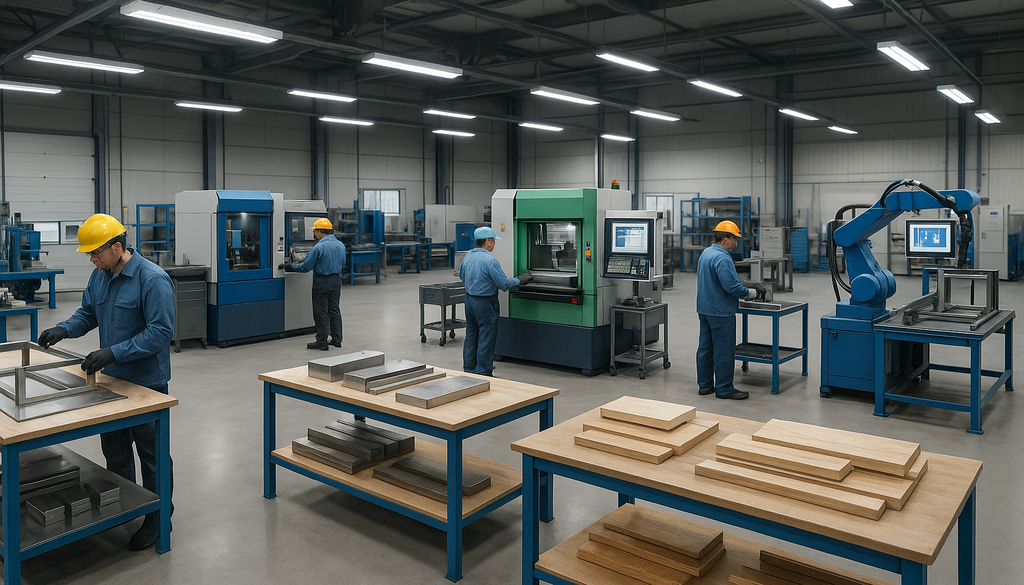
Are you finding it difficult to fill the labor gap at your warehouse or third-party logistics (3PL) company? In today’s ever-changing labor market, it has become increasingly challenging for a company to keep its warehouse staffed and running efficiently while maintaining a healthy profit margin. The competition for employees is fierce and finding qualified workers can be very difficult for most organizations.
The U.S. Bureau of Labor Statistics has reported that over 1.9 million people were employed in the warehousing and storage industries as a preliminary figure for January 2023. However, many 3PL and warehouse managers and owners are feeling the strain of trying to operate at capacity while working with a limited number of employees.
To help combat this widespread issue, one solution is to focus on perfecting your company’s indirect and direct labor utilization ratio to ensure that you get the most productive work from each employee within the work week. This can be accomplished after you first calculate your labor utilization ratio. But what does calculating labor utilization actually involve? Read on for more details!
What is Labor Utilization?

Let’s first define labor utilization. Labor utilization, also referred to as labor utilization rate is defined as the amount of an employee’s available time that’s used for productive and billable work (billable hours) for the company as a whole or for client work. It is expressed as a percentage, with 100% meaning that total billable hours worked have been devoted to productive tasks.
Total hours are sub-sectioned into direct labor utilization and indirect labor utilization. Labor utilization helps employers understand their employees’ working patterns and determine whether the company has the right number of employees for its operations.
Smartsheet.com states, “When it comes to resource management, utilization rates help in forecasting, resource optimization, and many other essential business functions. It’s a simple measurement that has powerful effects on how your business runs.” The ideal direct labor utilization rate or direct labor utilization ratio is around 65% or less. By understanding labor utilization and the corresponding utilization rate, managers can make informed decisions about hiring additional workers, reallocating employees to other tasks, or reducing staff as needed.
Ready to Elevate Your Operations? Contact us Today!
Seeking a comprehensive software solution that effortlessly integrates warehousing, transportation, accounting, and beyond?
Request a DemoThe Difference Between Indirect and Direct Labor Utilization
As stated above, labor utilization can be divided into two categories: direct labor utilization and indirect labor utilization.
Direct Labor Expenses:
Direct labor utilization measures how effectively an employee is used to perform a specific task. It takes into account the amount of time it takes for the employee to complete their assigned tasks and the accuracy with which they do so.
Indirect Labor Costs:
On the other hand, indirect labor utilization looks at how much time an employee spends on activities that are not directly related to their job. This includes things like vacations, sick time, breaks, administrative work, and training sessions.
Why is Labor Utilization Important in Warehousing?

Warehousing is a fast-paced and ever-changing industry, and labor utilization plays an important role in its success. Warehouses and 3PLs rely on their staff to fulfill customer orders quickly and accurately however it’s not always easy to get the most out of each employee even after paid training.
Direct labor utilization helps warehouse managers identify areas for improvement so that employees can perform at peak efficiency with the fewest total labor hours. By monitoring total billable hours and labor utilization rates, businesses can maximize the proficiency of their existing workforce, reduce resource costs, and better manage inventory levels with less time spent per employee.
“Low equipment and workforce utilization at the same time, especially when accompanied by indications from other KPIs that efficiency is low, could point to process or training issues,” notes trainingmag.com. Reduced efficiency results when too few employees are trained to use available equipment, or when supervisors don’t direct the use of open equipment properly.” It’s important for a company to effectively manage its workforce through proper paid training, accurate information, and direction to avoid spending too much time on total hours that will negatively affect the target rate.
For more details on calculating your total overall warehousing costs, check out this report from McKinsey & Company.
Is Labor Utilization the Same as Efficiency?
No. Labor utilization is a measurement of how effectively the staff is used in regard to completing tasks and achieving goals, whereas efficiency measures how quickly tasks are finished with the least amount of effort or labor hours. It’s important to remember that both labor utilization and efficiency are essential for warehouse operations — but they are not one and the same.
How to Calculate and Measure Employee Utilization Rates

You can calculate the utilization rate with this relatively simple utilization rate formula from Wall Street Prep:
Total Billable Hours ÷ Total Available Hours = Utilization Ratio
- Determine your total direct labor hours spent on productive tasks as well as idle or non-productive tasks.
- Divide your total productive labor hours by the total number of labor hours worked and multiply the result by 100 to get your labor utilization rate. For example, if you have a total 80 hours and 40 productive hours were worked during that time, then your labor utilization percentage would be 50%.
By tracking and monitoring your labor utilization rate on a regular basis, you can identify patterns in productivity and make more informed decisions about hiring additional staff or reducing personnel. Regularly examining your rate over time can also help you spot problems early on so that you can take prompt corrective action. Having visibility into this key metric will enable you to better manage payroll costs, maximize efficiency, and improve customer service levels in the long run.
A higher direct labor utilization rate might indicate a need for additional staff or better training, while a higher indirect labor utilization rate might indicate the need for more efficient management practices. With this knowledge, managers can make data-driven decisions about staffing levels and resource allocation in order to increase the company’s profit margin. By using labor utilization as an essential metric, businesses will be well on their way to successfully managing their warehouses.
Combating the Labor Shortage with Labor Utilization
The labor shortage in the warehousing industry is a growing concern and it’s important to understand how to optimize your existing workforce within their total available hours. Applying calculated labor utilization rates is one way that businesses can realize and reduce their payroll costs, operate at a higher capacity, and possibly add new clients to their project pipeline.
Most businesses that have adopted newer technology into their daily warehouse operations have realized an uptick in productivity and efficiency. For example, automation systems like RF scanning, voice picking, and warehouse management system (WMS) software can help streamline workflow and automate labor-intensive tasks like receiving, picking, and data entry among other administrative work.
The Impact of Automated WMS Tasks on Direct Labor Hours

In the world of warehousing, automation is becoming increasingly important as a way to reduce overall labor costs and maximize efficiency. Automated features of WMS software can help streamline work, increase order accuracy, and reduce paperwork associated with manual tasks. However, it’s important to understand how implementing automated WMS tasks might impact direct labor utilization rates in order to ensure that the software is cost-effective for the business.
In a 2022 Harvard Business Review article about how warehouse workers feel about automation, one worker interviewed described how automation reduced errors: “A lot of times there can be human error in the systems. Having technologies that help to improve the quality is great.”
By tracking your labor utilization rate before and after introducing WMS software, you can determine if automating certain operations has had an impact on productivity, resource allocation, or profit margin. With this information, you can make informed decisions about which manual processes should be replaced by automated solutions and adjust staffing levels accordingly. Understanding the impact of automated WMS software on total average labor hours and billable work will help businesses make sure that they are leveraging their existing workforce to its fullest potential.
Finally, it is important to note that inventory control is also essential for managing a successful warehouse. Factors such as inventory accuracy and visibility, order fulfillment times, stock availability, and supplier performance all play an important role in overall customer service levels. Utilizing direct labor utilization metrics together with other key inventory metrics will ensure that your warehouse or 3PL is running efficiently. By combining these two essential elements of warehousing success, businesses can provide the best customer experience possible while staying on top of ever-changing industry trends.
Why Choose Argos to Hit Your Target Labor Utilization Ratio

Argos Software offers innovative solutions for growers, 3PLs, and distributors. Our innovative warehousing industry software provides your business with the best features in accounting, cost control, analytics, and reporting, as well as premium inventory, freight, and labor management. Our advanced modules and intuitive design help reduce manual tasks and increase overall efficiency in the warehouse.
With built-in reporting tools, users can easily track their labor utilization rate in order to stay on top of their resources and optimize operations. Argos Software can also integrate with automated equipment like RF scanners, voice picking, and conveyor systems to streamline operations even further.
By utilizing Argos, your company will be able to reduce labor costs, maximize efficiency, and hit its target labor utilization ratio. Contact us today to learn more about how Argos Software can help you optimize your warehouse and 3PL operations.



